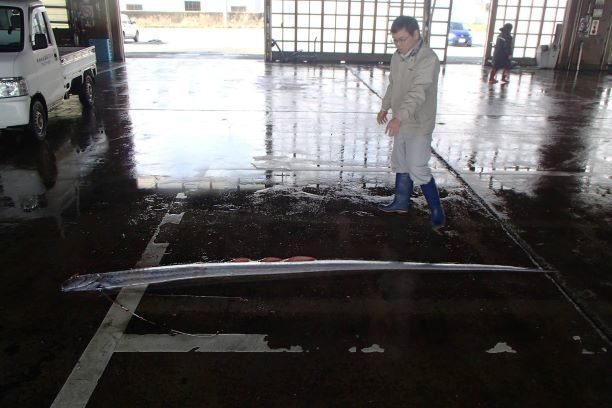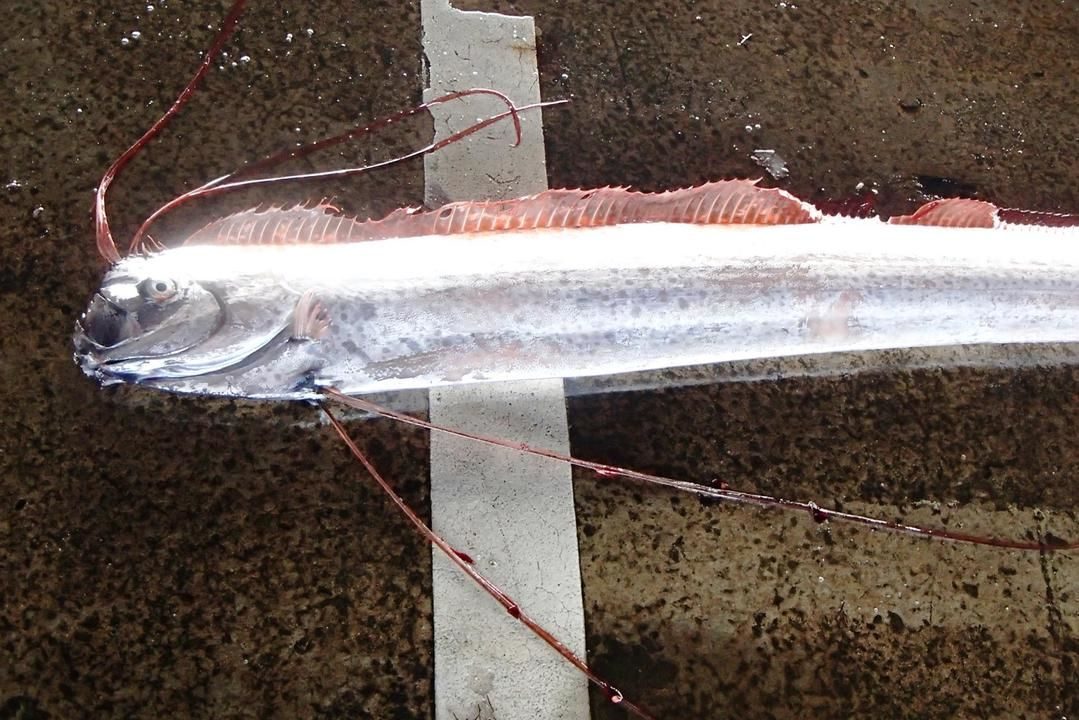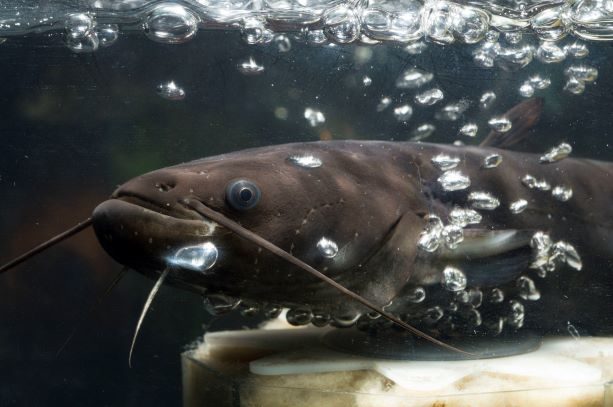In Japan, the appearance of deep-sea fish in shallow waters has long thought to foretell of an impending earthquake. One of the earliest references to the phenomenon is in the Shokoku rijindan, a selection of strange tales published in 1743. However, with no hard research on the subject, it was not known if the belief was fact or merely legend.
However, in June a research team from Tokai University's Institute of Oceanic Research and Development and the University of Shizuoka released results of a study that proved the association between deep sea fish and earthquakes as nothing more than superstition.
The group scoured records for sightings of eight deep-dwelling species like the oarfish and ribbon fish that are widely held to be portents of impending temblors. It identified 336 cases between November 1928 and March 2011 of deep-sea fish washing ashore or getting caught in nets.
The team then looked for evidence of earthquakes of magnitude 6.0 and above within a 100- kilometer radius of areas where fish had been sighted, but were only able to find one case, a tremor off Chūetsu in Niigata Prefecture on July 16, 2007. Based on the data, researchers concluded that no quantifiable relationship between sightings of deep-sea fish and earthquakes existed.
Orihara Yoshiaki, an assistant professor at the Tōkai University Institute of Oceanic Research who led the study, explained the motivation behind the project.
Deep-Sea Fish: An Excellent Research Subject
INTERVIEWER Why did you decide to study this phenomenon?
ORIHARA YOSHIAKI People have long associated occurrences such as unusual animal behavior or cloudy well water with earthquakes. I wanted to find out whether such directly observable events, known as macroscopic anomalous phenomena, could be predictors of seismic activity.
Monitoring and objectively defining animal behavior on an ongoing basis is a challenge. However, fish species that typically lurk in the depths of the ocean appearing on the surface is unusual enough that the phenomenon represented an easily-defined test for abnormal behavior.
I was also interested in potential signs observed before the Great East Japan Earthquake and tsunami in 2011. It wasn't enough to just look at the period before the earthquake, though. I needed many years' worth of data to determine whether there was any abnormal behavior before the disaster.

INTERVIEWER What challenges did your team face?
ORIHARA We needed a database to statistically evaluate the relationship between deep-sea fish sightings and earthquakes. The Japan Meteorological Agency keeps records of seismic events, but data on sightings of deep-sea fish is scarce. I managed to find several older research papers on the subject, but these were limited in scope, focusing on a specific area or time period. However, sightings of deep sea fish are rare enough that local newspapers and regional editions of national publications will mention them. We searched for articles using the National Diet Library's digital newspaper database, which at the time included local and major papers, free of charge.
The team also compiled a list of online discussions on deep-sea fish sightings and then looked through reems of microfiche to crosscheck the claims with newspaper reports. In addition, we studied information posted online by aquariums and contacted the facilities directly to check details.
To find correlations, we drew up a list of dates and locations of deep-sea fish sightings and compared this to the earthquake data. The Meteorological Agency's seismic records go back to 1923, so I excluded sightings from before then, leaving us with 392 cases stretching from November 20, 1928, until the March 2011 earthquake.
The project looked at sightings for eight types of deep-sea fish and identified 336 newspaper reports that drew connections between the phenomenon and earthquakes.
INTERVIEWER What was the team's reaction to the findings of the study?
ORIHARA In a word, disappointment. There initially appeared to be some correlation that gave us hope of showing the belief to be true. But after carefully scrutinizing the data, there proved to be no connection whatsoever. I should point out that the study only included known dates and locations, and any new information will need to be added to the database. However, I doubt additional cases will have a significant bearing on the overall results.
Jury Still out on Catfish
INTERVIEWER There is a similar belief that catfish behavior can signal an earthquake is on the way. Where do you stand on this theory?
ORIHARA I think it's safe to say that the evidence is inconclusive. Tokyo's municipal fisheries laboratory spent sixteen years between 1976 and 1991 observing catfish in an aquarium to see if there was a relationship between these creatures and earthquakes. The laboratory first quantified catfish behavior so that abnormality could be objectively defined. It then looked at earthquakes in Tokyo between 1978 and 1990 with a seismic intensity of three or above and found that abnormal behavior was observed at least ten days before thirty-one percent of the quakes.
A freshwater fisheries research facility in Kanagawa Prefecture did a similar study between 1979 and 1984. A total of twenty-four earthquakes centered less than 100 kilometers away and having a seismic intensity of three or above occurred during the period, and abnormal behavior was observed before ten of those. In other words, catfish exhibited abnormal behavior before forty-two percent of all earthquakes. It should be noted, however, that there were a total of 150 instances of abnormal catfish behavior during the period and less than seven percent coincided with earthquakes.
The Kanagawa result appears to be influenced by the large sample size and is not conclusive on its own. By refining the method used to analyze catfish behavior, we may be able to differentiate the 140 cases of abnormal behavior that did not coincide with earthquakes from the ten that did.
ORIHARA There are other natural phenomena held to be portents of earthquakes that still need to be looked at. I hope to do more empirical research to separate fact from superstition.
(Originally published in Japanese on FNN's Prime Online on July 1, 2019. Translated and edited by Nippon.com.)





Reader Comments